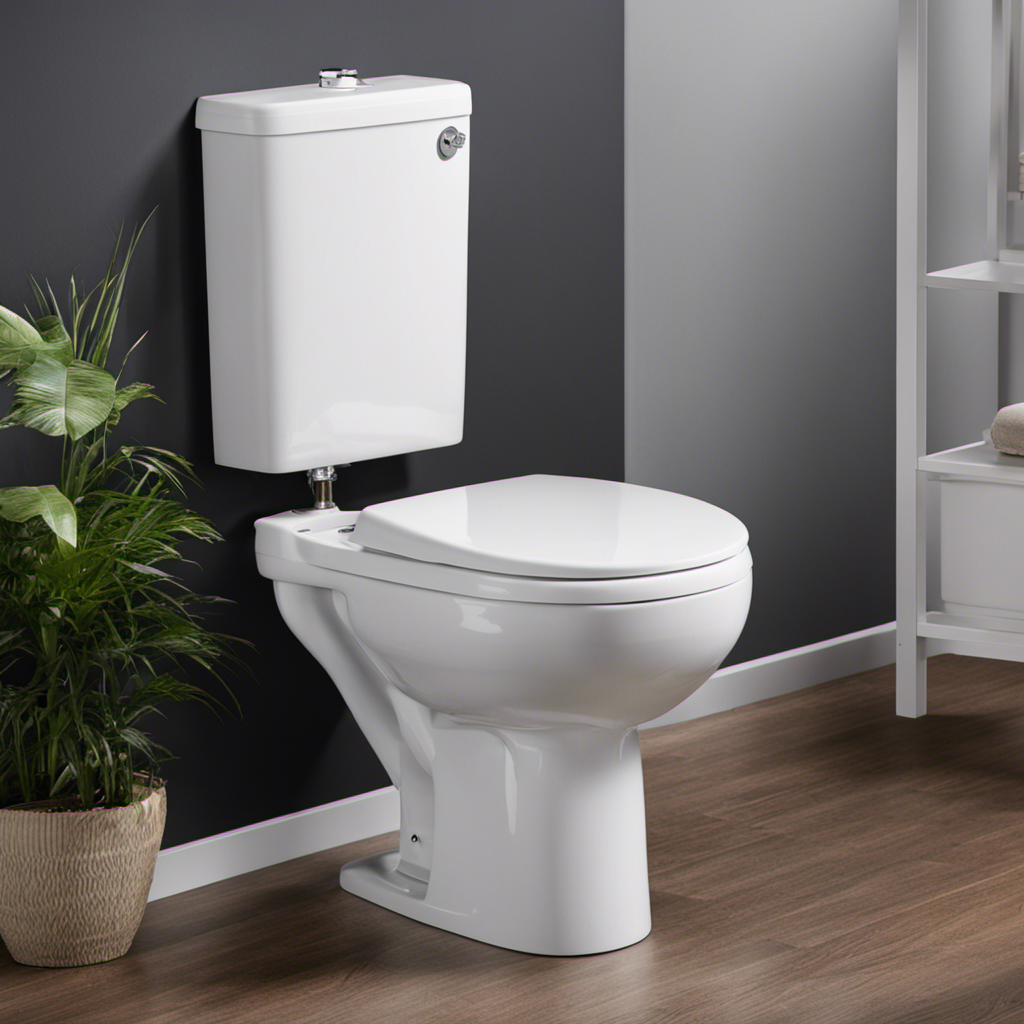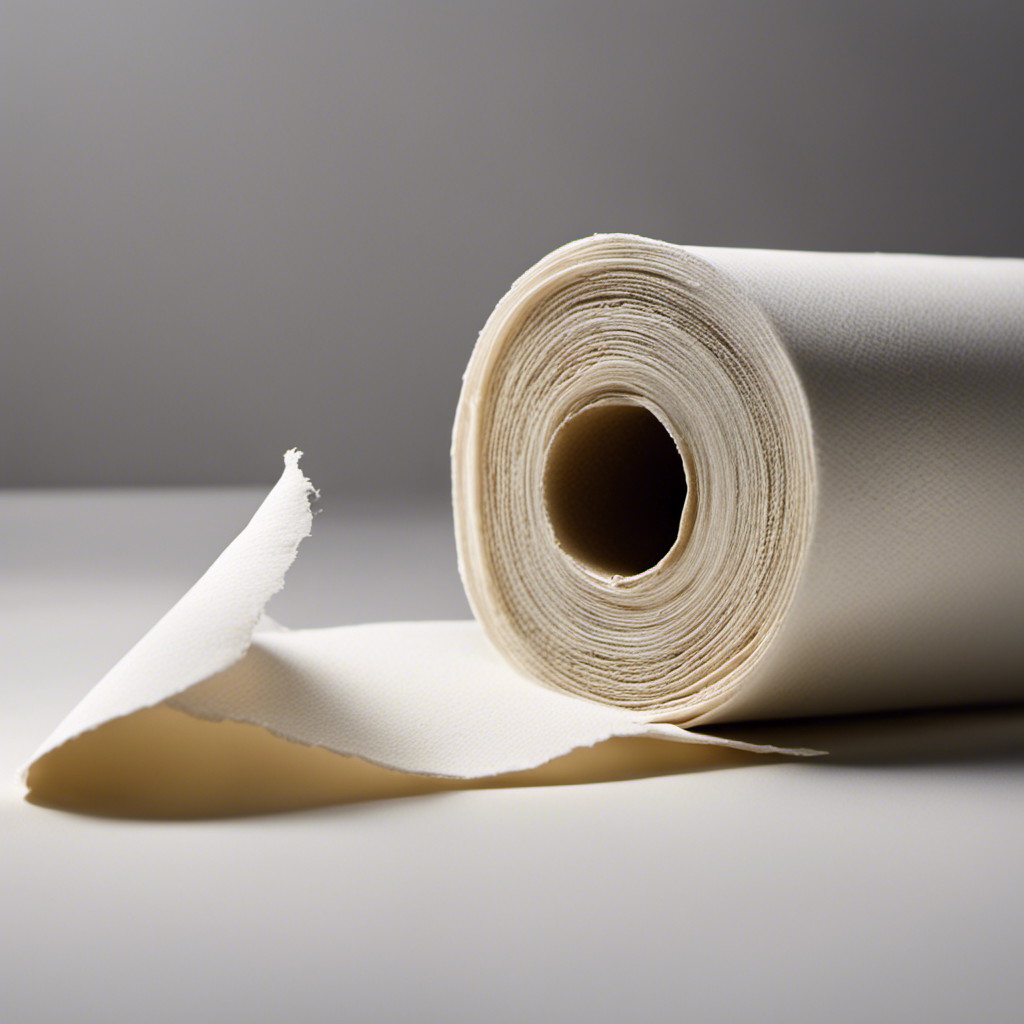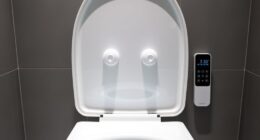I can’t believe how much water my toilet uses every day! It’s mind-boggling. So, I decided to do some research and gather the data on toilet water consumption.
In this article, I’ll explore the factors that affect toilet water usage, reveal the average daily water usage by toilets, and discuss efficient toilet models for water conservation.
I’ll also share some valuable tips to help you reduce your toilet’s water consumption. Let’s dive into the numbers and find ways to save water!
Key Takeaways
- Traditional toilets use a significant amount of water per flush.
- Low-flow toilets use less water per flush, resulting in water savings over time.
- Efficient toilets can reduce water consumption and lead to cost savings.
- Water conservation in toilets is important for contributing to water conservation efforts and promoting a sustainable lifestyle.
Water Consumption of Toilets
Toilets typically use around 1.6 to 3 gallons of water per flush. The amount of water used depends on the toilet design and how well it is maintained.
Older toilets generally use more water per flush, while newer models are designed to be more water-efficient. Upgrading to a newer toilet can significantly reduce water consumption.
Regular toilet maintenance is also important to ensure optimal water usage. This includes checking for leaks, replacing worn-out parts, and adjusting the water level in the tank if necessary.
By properly maintaining and choosing an efficient toilet design, we can reduce water usage and contribute to water conservation efforts.
Now, let’s explore the factors that can affect toilet water usage.
Factors Affecting Toilet Water Usage
When it comes to factors that affect how water is utilized, you’ll find that the type of toilet you have plays a significant role. The efficiency of a toilet in terms of water usage can vary depending on its design. Here are some key points to consider:
-
Toilet Water Efficiency:
-
Dual Flush Toilets: These toilets have two buttons, allowing you to select a smaller flush for liquid waste and a larger flush for solid waste. They can save a significant amount of water compared to traditional single-flush toilets.
-
Low-flow Toilets: These toilets are designed to use less water per flush, typically around 1.6 gallons or less. They achieve this through improved flushing mechanisms and bowl designs.
-
Impact of Toilet Design on Water Usage:
-
Flushing Mechanism: The efficiency of the flushing mechanism determines how well waste is cleared with minimal water. Modern toilets use innovative technologies to optimize water usage.
-
Bowl Shape and Rim Design: The shape and design of the bowl and rim can affect the effectiveness of the flush and minimize the need for extra water.
Average Daily Water Usage by Toilets
On average, I typically flush my toilet multiple times a day. It’s interesting to consider the impact of this seemingly mundane action on the environment.
Traditional toilets use a significant amount of water per flush, which can quickly add up. However, there are toilet water saving techniques that can help reduce our water consumption.
For instance, low-flow toilets use less water per flush, typically around 1.6 gallons (6 liters) compared to the 3.5 to 5 gallons (13 to 19 liters) used by older models. This can result in significant water savings over time.
Efficient Toilet Models and Water Conservation
If you’re looking to conserve water, consider switching to a more efficient toilet model. With toilet water saving technology, these modern toilets can significantly reduce water usage without compromising performance. Here are some benefits of water efficient toilets:
-
Reduced water consumption: Water efficient toilets use less water per flush, helping to conserve this precious resource. Some models use as little as 1.28 gallons per flush, compared to older toilets that can use up to 6 gallons.
-
Cost savings: With less water being used, water bills can be significantly reduced over time. This can lead to substantial savings for both households and businesses.
-
Environmental impact: By conserving water, efficient toilets contribute to the conservation of natural resources and reduce the strain on water supply systems.
-
Improved efficiency: Water efficient toilets are designed with advanced flushing mechanisms that ensure effective waste removal with minimal water usage.
Tips to Reduce Toilet Water Consumption
To reduce your toilet water consumption, consider implementing these simple tips.
By making a few changes to your daily routine, you can contribute to water conservation and reduce your environmental impact.
First, check for any leaks in your toilet tank or pipes. A small leak can waste a significant amount of water over time.
Next, consider installing a dual-flush toilet or a low-flow toilet. These eco-friendly toilet options use less water per flush compared to traditional toilets.
Additionally, you can place a filled water bottle or a brick in your toilet tank to displace water and reduce the amount used for each flush.
Lastly, remember to only flush when necessary and avoid using your toilet as a trash can.
These tips will help you save water and promote a more sustainable lifestyle.
Conclusion
In conclusion, the water consumption of toilets can have a significant impact on our daily water usage. Factors such as toilet model, flush volume, and frequency of use all play a role in determining how much water a toilet uses per day.
By choosing efficient toilet models and implementing water conservation tips, we can reduce our toilet water consumption and contribute to a more sustainable future.
Just as a small leak can sink a ship, every drop of water saved can make a big difference in preserving our precious water resources.










